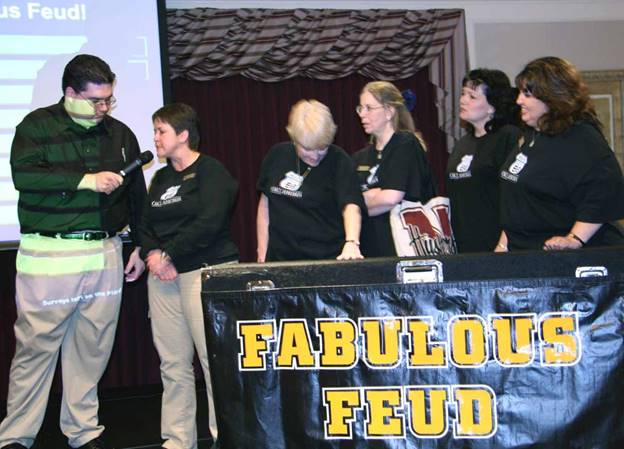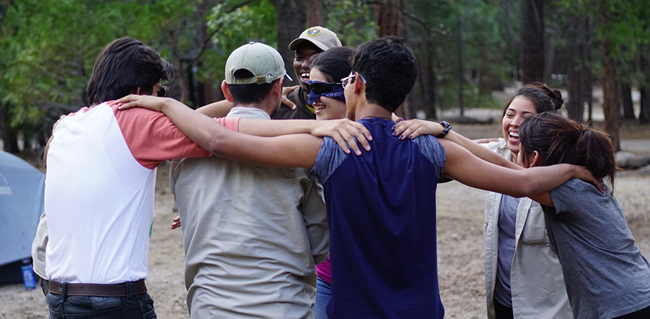10 Fun and Creative Team-Building Activities for Teenagers
TL, DR
Team-building activities help teens learn skills such as communication and cooperation skills, leadership skills, innovation, and trust-building skills. Escape room challenges increase critical thinking as teens work with limited time to solve puzzles to escape.
In contrast, the creative build-off increases teamwork as teens have limited materials and time to build structures or devices.
Blindfolded obstacle courses work through the use of words. One teammate has to explain to the other the type of challenges that are present. Therefore, they work best with trust and cooperation.
The students can use their creativity and ideas to perform a skit in Improv theatre games. The Mystery Box design tasks create innovation when the given teams are required to develop something useful or aesthetic from items collected randomly.
Photo scavenger Hunts are adventurous and innovative tasks based on photos a team or individual has to capture. The Marshmallow tower challenge is a strategic game where young people have to construct a freestanding tower with basic products as far as possible.
Community service projects, including things like park maintenance and creating care packages, instill responsibility and cooperation.
Last but not least, at the end of the event, TeamtTrivia showdowns is an event in which teams answer mentally challenging questions, and the teams work together to answer the questions on different categories or subject areas.
Each of them is useful for learning and creates different situations that develop important skills in life. Here are some strategies that a facilitator can employ to enhance engagement:
One, a facilitator needs to ensure everyone participates; two, one should make challenges suited to everyone. Finally, one should hold debrief sessions where participants are made to dissect what they have learned from the process.
All these activities may be fun and amazing, and they can help teenagers develop as people and as valuable parts of a team.
10 Fun and Creative Team-Building Activities for Teenagers

As much as we teach young kids about team-building, it is also an important aspect to learn for teenagers. Team development activities are important to teenagers as they combine with all other attributes like communication, decision-making, and leadership to form a phenomenal personality.
If they get to learn such an important concept in a fun and more interesting way, they create an opportunity to build deep and healthy relationships and achieve something.
This article is based on the ten fun-based, teen-appeal, best team-building activities for your teenagers meant to foster team spirit among them.
1. Escape Room Challenge
Escape rooms are puzzles you must solve in a specific period with your team or group. They are a great way to have a fun time with friends and family, and a do-it-yourself escape room includes creating your clues and challenges based on a theme, for example, ‘Lost in Space’ or ‘Haunted Library.’
Start breaking the members down into several small groups and set a time frame of 30-60 minutes. This activity helps teens reason effectively, speak and write cohesively, and solve problems in a team, specifically under pressure.
The time constraint step up the game brings enthusiasm and encourages the participants to depend on other members to do well.
2. Creative Build-Off
Creative build-off is a game where participants are divided into different teams, and they have to either construct an object with limited resources or solve a problem within the given time. Teams are given items such as straws, tape, paper, or legos and then given tasks such as constructing the tallest tower, building the strongest bridge, or using a functional catapult.
As a bonus, each team must present the creation completed as a commercial to sell their product to imaginary buyers. This activity challenges creativity, practices collaboration, and teamwork, and integrates the students’ problem-solving abilities.
The pitching element also helps to develop speech and persuasion skills a person has or might possess. Above all, it teaches the teens how to work with teams and how to respond to different opinions without getting offended.
3. Blindfolded Obstacle Course

In this activity, teams are made where one teammate guides the other blindfolded one through the maze or room full of obstacles. You can Organize a fun physical challenge for teens, including the use of a chair, cones, or anything else that can be turned into an obstacle course.
The execution of this exercise can be best described as a test of trust and good communication. Clear instructions and paying attention to directions make it an optimal choice for inter-peer communication development. This game will teach them how to form an effective team with just the elements of active listening and trusting others.
4. Improv Theatre Games
Improvisational games entail the creation of scenes or problem-solving within groups. All you need to do is to break the children into groups, for instance, and then give them cues like, ‘A group of stranded explorers come across a map’ or ‘Aliens coming to earth for the first time.’
Every team has fifteen minutes to practice, after which it presents a skit. Improvisation games, help everyone gain self-esteem, make fast decisions, and be flexible. Teens learn how to support one another with creativity and to be free to be random without criticism.
This way, they also learn to appreciate other’s ideas and to give credit to the groupmate who went out of the way to make their group stand out.
5. Human Knot

In this tried and tested activity, the students join hands and create a circle. They are required to undo it without letting go of each other’s hands. Get the group to stand in a circle and make them hold hands with each other in a circular way.
They then work together to solve this puzzle of hands where they have to free themselves with the help of ropes passing through the turns, but they have to keep their hands interlocked.
Engagement in this activity creates togetherness and patience. That is a very good warm-up tool, which calls for body coordination and teamwork. It is also a good way to teach team patience within group tasks.
6. Mystery Box Design
This activity involves creating something functional or artistic from an ‘ambush’ box containing only those materials allowed by the organizers. Divide teams with themes or objectives like ‘new invention,’ ‘futuristic city,’ etc., and hand them boxes filled with unrelated items such as cardboard, string, paperclips, markers, etc.
This activity helps participants to think outside the box and learn to work closely with one another. Teens have to seek to capitalize on every person’s talents and contributions for a group to come up with a worthwhile project.
7. Photo Scavenger Hunt

In photo scavenger hunts, the teams are required to take pictures in different parts of the area in order to meet the criteria set down for them. Make a challenges list like: “Take a selfie with an object that is red” or “stage the Ultron movie scene.”
Divide the group into two or more teams; it is better to do this within a time constraint and not restrict creativity to complete the job.
A scavenger hunt is an adventurous game that ensures the teens work together creatively to produce their exciting moments.
8. The Marshmellow Tower Challenge
The marshmallow tower game is one of the most fun activities you can make teenagers play.
The purpose of this challenge is to construct the tallest structure that is made of spaghetti, tape, string, and a marshmallow.
Make sure to offer teams identical kits with all the needed stuff. Instruct them that the marshmallow needs to be placed at the top of the structure.
These towers should be set in a time limit of approximately 20 minutes. This challenge fosters strategic thinking is it as aspects such as using ideas as resources, and problem-solving.
What must be noted, however, is that to complete their job successfully, teams need to solve the problem with proper integration of creativity and usability.
9. Community Service Project
Suggest students and members of a community to partner and undertake a project that will have a positive impact on society as a whole.
Some of the projects could be to clean a park, pack-point care packs, or paint among others. Properly arrange the groups in terms of job distribution so that no one feels inferior or unequal.
Community service aids in understanding and defending oppression and promoting unity. It’s a very rewarding way for teens to realize that they are doing something useful and see the outcome that resulted from their work with others and that they are making an actual positive impact on the environment they are in.
10. Team Trivia Showdown

Team trivia is where the group gets to answer true or false questions together to earn points. On this show, people get ready with questions in various topics such as pop culture, history, and science. The groups have to then find the answers together.
Make a point more competitive by using buzzer systems or timed rounds. Trivia games are fun, easy to play, and engage the brain. They underscore the fact that it is more effective to be receptive to collaboration to achieve set goals.
Tips to Make Team-Building Fun
For these activities to be meaningful as well as fun, encourage participation by assigning each team member a task, and have time for some reflection regarding experience and outcomes.
Moreover, you can individualize the activities in order to adjust the challenges based on the participants’ number, preferences, and aptitudes.
Make everyone feel heard and look out for the group members who are hesitating to get into action. Teach them gently and make things fun so that they don’t get the wrong idea of how teamwork works or feel a burden to get involved.
Final Thoughts
Entertaining and creative team-building activities are a perfect way for teens to learn this important skill in order to form a good team and personal attributes.
In such tasks as puzzle solving, tower constructing, or community contributing, children learn how to cooperate, solve problems, and respect one another.
Including these elements in daily learning rather than occasional activities allows educators, leaders, and parents to raise confident, competent, and socially prepared learners.

